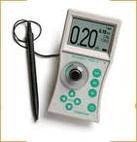A special catheter is placed beside a peripheral nerve or nerve plexus with the aim of providing continuous droplet infusion or repeated single drug doses in order to treat pain. The method is mainly applied for postoperative analgesia, the complex regional pain syndrome and ischaemic limb pain, until other treatments become effective or further decisions are taken.
The technique is applied under local skin anaesthesia at the acupuncture site. A special needle is advanced by using neurotransmission to the peripheral nerve. As soon as this is identified and the tip of the needle approaches very close the nerve without coming in contact with it, a drug solution is delivered. Then, a special catheter is advanced next to the nerve and is stabilized to the skin. The catheter is connected with a pump for the infusion of drug solusion that is stored in a small reservoir within the pump. Continuous infusion offers high-quality analgesia to the patient and can be retained with safety for approximately one week, apart from some exceptional cases in which this period can prolong depending on the physician’s evaluation and patient’s needs.
RISKS – COMPLICATIONS
Potential complications of the method are: infection, nerve injury, haemorrhage, haematoma. Other complications are cardiotoxicity and neurotoxicity from local anaesthetics if these are administered intravenously. The incidence rate of complications in the hands of specialists is very rare.
JOURNAL ARTICLES
Ambulatory Perineural Local Anesthetic Infusion. Ilfeld, Brian; University of Florida, Gainesville. 4th Regional Anesthesia Int’l Symposium Oct. 11, 2002 Continuous Peripheral Nerve Blocks for Patients at Home Brian M. Ilfeld, M.D. F. Kayser Enneking, M.D. American Society of Anesthesiologists May 2005 A pilot study on continuous femoral perineural catheter for analgesia after total knee arthroplasty: the effect on physical rehabilitation and outcomes. De Ruyter ML, Brueilly KE, Harrison BA, Greengrass RA, Putzke JD, Brodersen MP. J Arthroplasty. 2006 Dec;21(8):1111- 7. Epub 2006 Jun 21 Continuous peripheral nerve blocks at home for treatment of recurrent complex regional pain syndrome I in children. Dadure C, Motais F, Ricard C, Raux O, Troncin R, Capdevila X. Anesthesiology. 2005 Feb;102(2):252-5. Effects of intravenous patient-controlled analgesia with morphine, continuous epidural analgesia, and continuous femoral nerve sheath block on rehabilitation after unilateral total-hip arthroplasty. Singelyn FJ, Ferrant T, Malisse MF, Joris D. Reg Anesth Pain Med. 2005 Sep-Oct;30(5):452-














